Amifostine induces antioxidant enzymatic activities in normal tissues and a transplantable tumor that can affect radiation response
- PMID: 19215822
- PMCID: PMC2668222
- DOI: 10.1016/j.ijrobp.2008.10.061
Amifostine induces antioxidant enzymatic activities in normal tissues and a transplantable tumor that can affect radiation response
Abstract
Purpose: To determine whether amifostine can induce elevated manganese superoxide dismutase (SOD2) in murine tissues and a transplantable SA-NH tumor, resulting in a delayed tumor cell radioprotective effect.
Methods and materials: SA-NH tumor-bearing C3H mice were treated with a single 400 mg/kg or three daily 50 mg/kg doses of amifostine administered intraperitoneally. At selected time intervals after the last injection, the heart, liver, lung, pancreas, small intestine, spleen, and SA-NH tumor were removed and analyzed for SOD2, catalase, and glutathione peroxidase (GPx) enzymatic activity. The effect of elevated SOD2 enzymatic activity on the radiation response of SA-NH cells was determined.
Results: SOD2 activity was significantly elevated in selected tissues and a tumor 24 h after amifostine treatment. Catalase and GPx activities remained unchanged except for significant elevations in the spleen. GPx was also elevated in the pancreas. SA-NH tumor cells exhibited a twofold elevation in SOD2 activity and a 27% elevation in radiation resistance. Amifostine administered in three daily fractions of 50 mg/kg each also resulted in significant elevations of these antioxidant enzymes.
Conclusions: Amifostine can induce a delayed radioprotective effect that correlates with elevated levels of SOD2 activity in SA-NH tumor. If limited to normal tissues, this delayed radioprotective effect offers an additional potential for overall radiation protection. However, amifostine-induced elevation of SOD2 activity in tumors could have an unanticipated deleterious effect on tumor responses to fractionated radiation therapy, given that the radioprotector is administered daily just before each 2-Gy fractionated dose.
Conflict of interest statement
Conflict of Interest Notification
The authors declare no conflicts of interest.
Figures
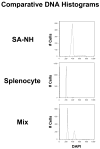
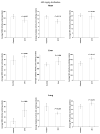
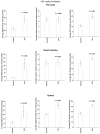
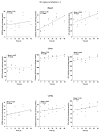
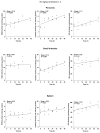


Similar articles
-
Delayed radioprotection by NFkappaB-mediated induction of Sod2 (MnSOD) in SA-NH tumor cells after exposure to clinically used thiol-containing drugs.Radiat Res. 2004 Nov;162(5):536-46. doi: 10.1667/rr3256. Radiat Res. 2004. PMID: 15624308
-
Maintenance of manganese superoxide dismutase (SOD2)-mediated delayed radioprotection induced by repeated administration of the free thiol form of amifostine.Radiat Res. 2008 May;169(5):495-505. doi: 10.1667/RR1194.1. Radiat Res. 2008. PMID: 18439041 Free PMC article.
-
Manganese superoxide dismutase (SOD2)-mediated delayed radioprotection induced by the free thiol form of amifostine and tumor necrosis factor alpha.Radiat Res. 2007 Apr;167(4):465-74. doi: 10.1667/RR0758.1. Radiat Res. 2007. PMID: 17388698
-
Radioprotection by antioxidant enzymes and enzyme mimetics.Pharmacol Ther. 1988;39(1-3):301-9. doi: 10.1016/0163-7258(88)90076-9. Pharmacol Ther. 1988. PMID: 3059373 Review. No abstract available.
-
The preclinical basis for broad-spectrum selective cytoprotection of normal tissues from cytotoxic therapies by amifostine.Semin Oncol. 1999 Apr;26(2 Suppl 7):3-21. Semin Oncol. 1999. PMID: 10348255 Review.
Cited by
-
Comments on the mechanisms of action of radiation protective agents: basis components and their polyvalence.Springerplus. 2014 Aug 7;3:414. doi: 10.1186/2193-1801-3-414. eCollection 2014. Springerplus. 2014. PMID: 25133093 Free PMC article. Review.
-
SOD2-mediated adaptive responses induced by low-dose ionizing radiation via TNF signaling and amifostine.Free Radic Biol Med. 2011 Nov 15;51(10):1918-25. doi: 10.1016/j.freeradbiomed.2011.08.032. Epub 2011 Sep 3. Free Radic Biol Med. 2011. PMID: 21945096 Free PMC article.
-
A survivin-associated adaptive response in radiation therapy.Cancer Res. 2013 Jul 15;73(14):4418-28. doi: 10.1158/0008-5472.CAN-12-4640. Epub 2013 May 7. Cancer Res. 2013. PMID: 23651635 Free PMC article.
-
SOD2 Mediates Amifostine-Induced Protection against Glutamate in PC12 Cells.Oxid Med Cell Longev. 2016;2016:4202437. doi: 10.1155/2016/4202437. Epub 2015 Dec 7. Oxid Med Cell Longev. 2016. PMID: 26770652 Free PMC article.
-
Radiation-induced chronic oxidative renal damage can be reduced by amifostine.Med Oncol. 2012 Jun;29(2):768-75. doi: 10.1007/s12032-011-9870-7. Epub 2011 Feb 24. Med Oncol. 2012. PMID: 21347716
References
-
- Kouvaris JR, Kouloulias VE, Vlahos LJ. Amifostine: The first selective-target and broad-spectrum radioprotector. The Oncologist. 2007;12:738–747. - PubMed
-
- Smoluk GD, Fahey RC, Calabro-Jones, et al. Radioprotection of cells in culture by WR2721 and derivatives: Form of the drug responsible for protection. Cancer Res. 1988;48:3641–3647. - PubMed
-
- Giambarresi L, Jacobs AJ. Radioprotectants. In: Conklin JJ, Walker RI, editors. Military radiobiology. Orlando, FL: Academic Press; 1987. pp. 265–301.
-
- Das KC, Lewis-Molock Y, White CW. Activation of NF-κb and elevation of MnSOD gene expression by thiol reducing agents in lung adenocarcinoma (A549) cells. Am J Physiol. 1995;269:L588–L602. - PubMed
-
- Antras-Ferry J, Maheo K, Chevanne M, et al. Oltipraz stimulates the transcription of the manganese superoxide dismutase gene in rat hepatocytes. Carcinogenesis. 1997;18:2113–2117. - PubMed
Publication types
MeSH terms
Substances
Grants and funding
LinkOut - more resources
Full Text Sources

